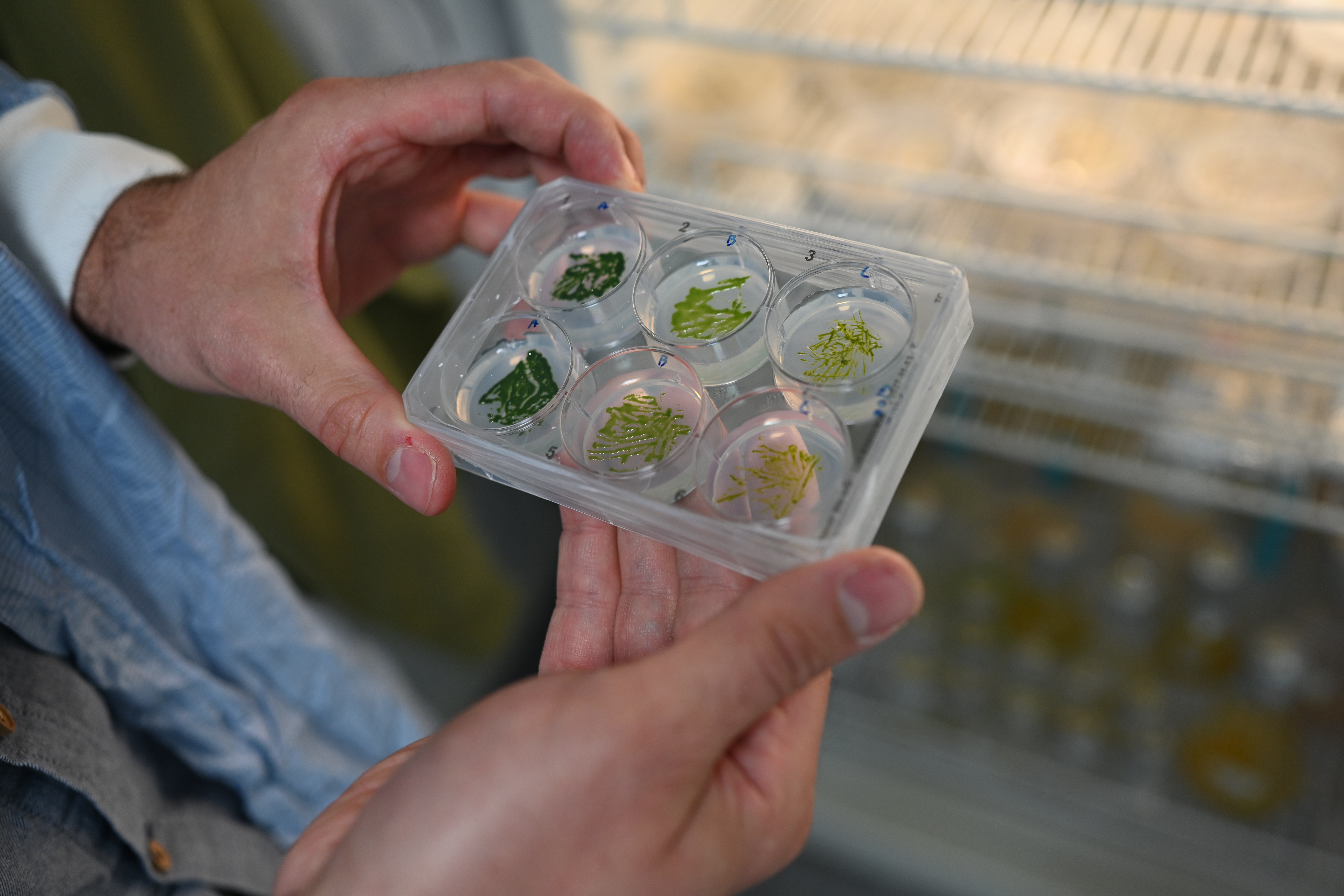
Engineered algae can be used to measure pollution in water
Water quality measurements are more necessary than ever, but they are expensive and cumbersome. Researchers from the University of Southern Denmark are working to make on-site measurements much simpler, harnessing nature itself.
It might be one of the most important organisms you’ve never heard of.
The diatom.
This microscopic alga consists of just one cell and can be as small as 0.02 millimetres. Yet, the oceans are full of them, and like a giant underwater forest, they generate around 20% of the oxygen we breathe.
With a new international research project, led by the Institute of Molecular Biology and Biotechnology of the Foundation for Research and Technology Hellas, diatoms could become even more important.
Researchers from the University of Southern Denmark (SDU) in Odense are part of the project, and they are working on a method where bioengineered algae, combined with a simple measuring device, can be used to analyse heavy metal pollution in water.
As it stands today, such analyses are both time-consuming and expensive, explains Dr. Michele Fabris, associate professor in biotechnology at SDU:
- Normally, water quality testing requires specialised laboratories, lots of expensive and advanced equipment, and, not least, trained people who know how to use the equipment. With our bioengineered algae and our technology, anyone will be able to take a quick test and get an immediate result at a very low cost.
Algae as biosensors
The researchers want to exploit the fact that diatoms are naturally good at adapting to various environments, including polluted water, and that they activate certain genes when they come into contact with, for example, heavy metals such as cadmium and nickel.
Through genetic modification, the researchers the researchers will re-engineer these DNA sequences to turn on genes that produce fluorescent proteins, causing the algae to light up when they are in a polluted environment.
- You won’t be able to see it with the naked eye. You pour your water sample into a small measuring device, which already contains the modified algae, and then you will be able to read whether there are heavy metals in the water or not, says Dr. Ruqian Yang, postdoc at SDU Biotechnology.
The method will not be as detailed as conventional tests in laboratories. Therefore, the researchers do not expect the algae to completely replace chemical analyses of water quality.
- But it will be a much cheaper and faster way to test more areas for pollution, and it can act as a preliminary screening before deciding whether a traditional water sample is needed, says the researcher.
Cannot be released into nature
Because the organisms are genetically modified, there are a number of requirements to ensure they do not spread into nature. This has been taken into account, assures Dr. Michele Fabris.
- Firstly, the algae do not leave the measuring device, and if they do somehow escape, they are modified to be dependent on a specific type of supplement that does not exist outside the measuring device, he explains.
The research project is part of a large EU-funded project called AquaBioSens, where researchers from across Europe, in collaboration with universities and companies, are developing new technologies for field studies of water quality.
Water pollution is a significant problem for wildlife, ecosystems, and public health, and the EU has therefore declared a goal to save Europe's seas, lakes, rivers, and streams by 2030. If this is to succeed, we need new methods for measuring water quality.
ABOUT THE PROJECT
Researchers from SDU’s Department of Green Technology are working to develop methods for cheap and fast field analysis of heavy metals in seawater using genetically modified diatoms. Diatoms are a type of microalgae.
The project is part of the European research project AquaBioSens, which aims to develop a wide range of new technologies for studying water pollution.
AquaBioSens is coordinated by the Institute of Molecular Biology and Biotechnology of the Foundation for Research and Technology Hellas (IMBB-FORTH, Greece). In total, there are eight partners involved: Dublin City University (Ireland), the University of Southern Denmark (Denmark), BIOPIX DNA Technology P.C. (Greece), ETT S.p.A. (Italy), INTERSPREAD GmbH (Austria), the University of Southampton (United Kingdom), and the National Oceanography Centre (United Kingdom).
The research project is funded by the EU’s Horizon programme and has a total budget of 2.5 million euros.
About the project
Researchers from SDU’s Department of Green Technology are working to develop methods for cheap and fast field analysis of heavy metals in seawater using genetically modified diatoms. Diatoms are a type of microalgae.
The project is part of the European research project AquaBioSens, which aims to develop a wide range of new technologies for studying water pollution.
AquaBioSens is coordinated by the Institute of Molecular Biology and Biotechnology of the Foundation for Research and Technology Hellas (IMBB-FORTH, Greece). In total, there are eight partners involved: Dublin City University (Ireland), the University of Southern Denmark (Denmark), BIOPIX DNA Technology P.C. (Greece), ETT S.p.A. (Italy), INTERSPREAD GmbH (Austria), the University of Southampton (United Kingdom), and the National Oceanography Centre (United Kingdom).
The research project is funded by the EU’s Horizon programme and has a total budget of 2.5 million euros.